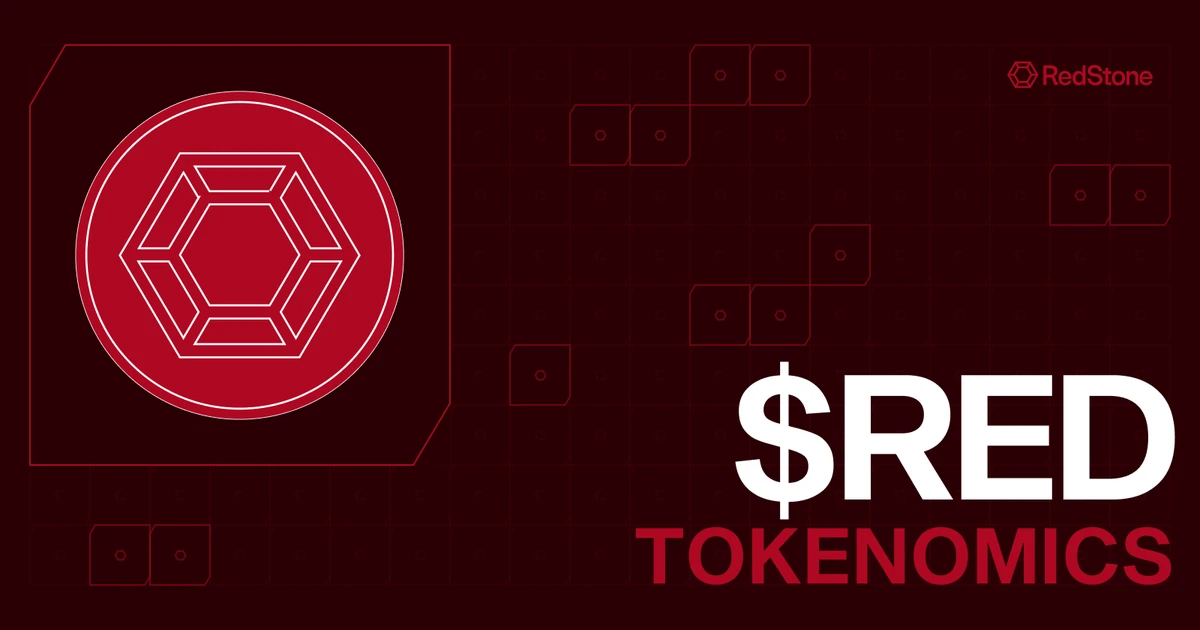
Original author: Poopman
Compiled by Odaily Planet Daily ( @OdailyChina )
Translator: CryptoLeo ( @LeoAndCrypto )
Although the crypto market has been dominated by Meme, Meme, and Meme in recent months, compared to the end of 2024, the hotspot of Meme hype has turned to an extremely distorted corner. From Trumps coin issuance to the recent Libra scandal, the Meme sentiment in the market has also declined. Please see the figure below for details:
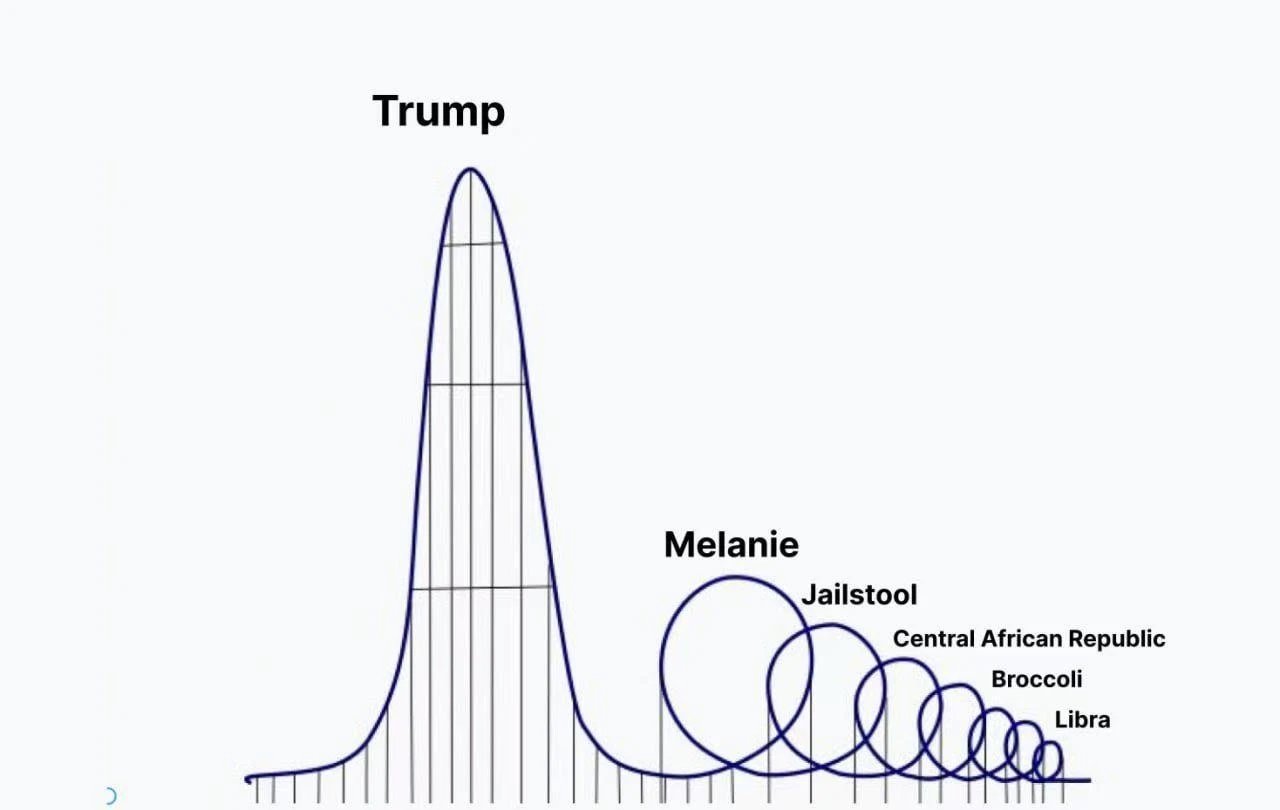
At the data level, since the launch of the LIBRA token, pump.funs daily trading volume (including the purchase and trading of newly issued tokens) has fallen 33.7% from $184 million to $122 million. In addition to trading volume, pump.fun has stagnated in other aspects. On Tuesday, the platform registered only 59,000 new wallets, the lowest since November 17, 2024. Compared with the day of President Trumps inauguration last month, the number of active wallets on the platform reached about 110,000. Compared with the current distorted meme stage, I miss the AI Agent Meme Seventeen a few months ago, but PvP is not the end of blockchain. Practicality and innovation are the eternal topics of the industry.
One of the projects that I am optimistic about recently that combines practicality and innovation is the oracle project RedStone. The project completed a $15 million Series A financing in July 2024 and released its token economics a week ago. DeFi KOL Poopman wrote about RedStone yesterday. The article analyzes RedStones advantages and potential from several perspectives, including its modular advantages, market share, and token economics. Odaily Planet Daily compiled it as follows:
TL;DR
-RedStone’s modular architecture, AVS scalability, strong security, and ultra-low latency make it one of the most trusted and fastest oracles in the ecosystem.
-In 2024, with $3.8 billion TVS and over 100 partners, RedStone has become the second largest oracle provider in the field.
-RedStone has fast price update speed, low latency, high stability and accuracy compared to other oracles during the $2 billion liquidation and Renzo (ezETH) decoupling in 2024.
- Its token RED is a revenue-generating utility token that derives value from data and price feedback services. To improve capital efficiency, RED can be packaged as LRT and deployed in various DeFi protocols to obtain additional returns.
-Based on Pyths $2 billion FDV, RED USD is expected to trade at around $2. The token economy is more focused on community growth, with 70% of tokens locked in the first 12 months.
The current market cycle has been deviating from fundamentals for some time, and everyone knows that this is unhealthy for the long-term development of the industry. Many of the tokens we know today are just bubbles or memes, while innovative protocols with real demand and mass adoption are still being ignored.
Recently, RedStone Oracle announced that their token RED will be launching a TGE. Its token economics aims to provide more value to users or token holders.
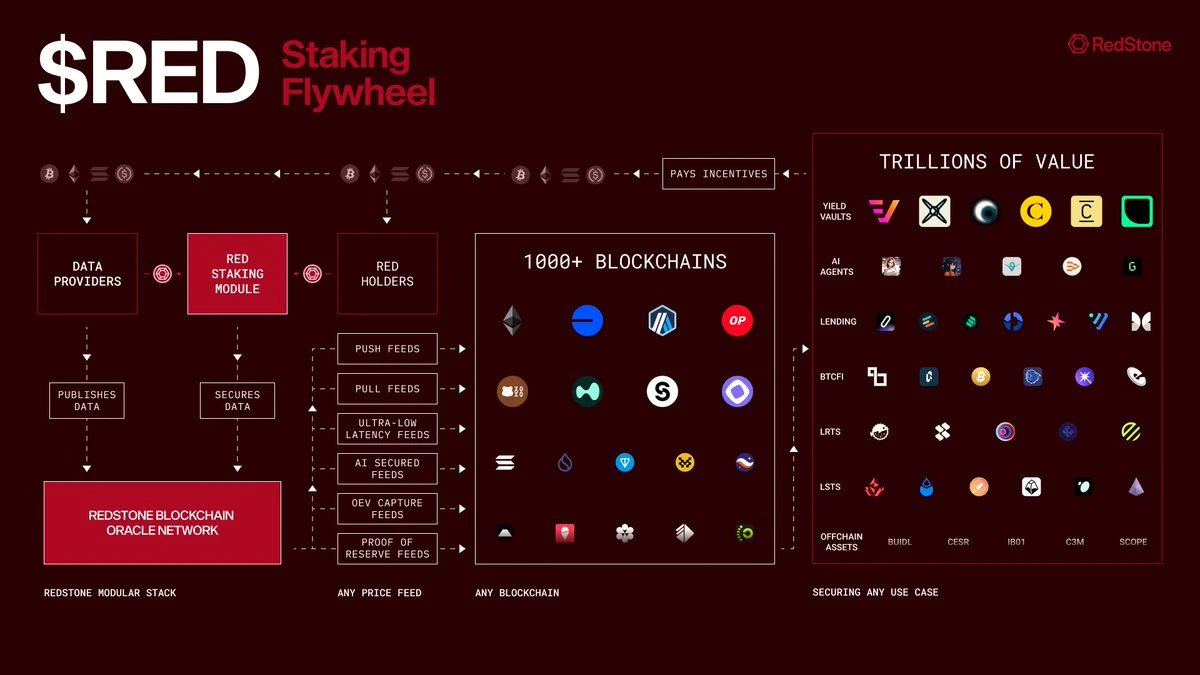
In this article, the author will analyze the advantages and potential of RedStone from 5 perspectives:
-Features of RedStone
-RedStone Market Adoption
-Comparison with other oracles
-RED Token Economy
-RED Potential Valuation
Why is RedStone better?
As we all know, oracle is one of the most important components of blockchain. Without oracle, blockchain is just a closed ecosystem with no access to data from external sources. In todays market, every chain and dApp needs a cost-effective, secure and flexible oracle.
And I believe RedStone has successfully filled that gap.
In recent years, RedStone has integrated and provided price oracles for hundreds of mainstream (Tier 1) protocols since day one. Including USDe, Pendle, Morph Blue, Berachain, EtherFi and Lombard BTC. But what makes RedStone a favorite among so many projects?
The reasons are simple: security and modularity.
Security under AVS
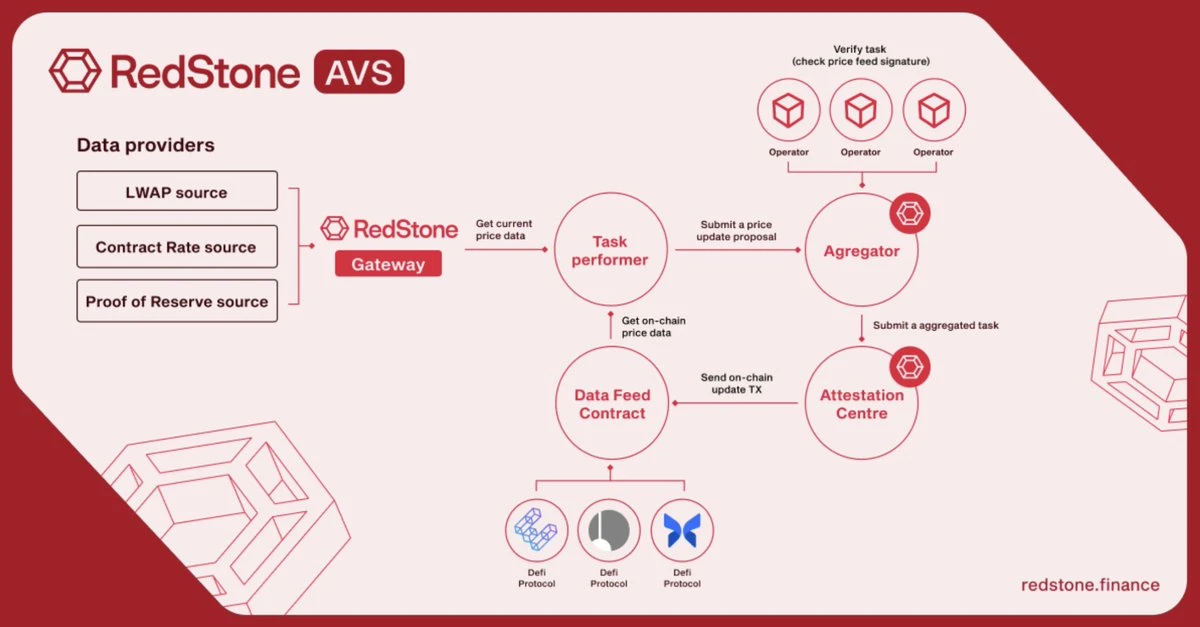
Unlike other oracles, RedStone can achieve more efficient gas costs and scalability by using the EigenLayer AVS framework to verify the accuracy and validity of price feed data.
Odaily Note: AVS stands for Actively Validated Service, which is the most important concept in the Eigenlayer ecosystem. AVS is simply a protocol, service or system that requires collateral to verify a task. The AVS service itself is responsible for obtaining and reporting prices. At the same time, AVS also corresponds to its service management contract - Service Manager, which communicates with the Eigenlayer contract and contains status related to service functions, such as the operator running the service and the amount of deposit used to protect the service.
The traditional oracle price push model works by collecting data from various sources and validating it through DDL (Data Definition Language) and data consumption modules. Since the on-chain verification process requires a large amount of gas fees, it becomes quite expensive. With RedStones AVS, RedStone can provide highly optimized verification gas by processing data off-chain.
The process is as follows: AVS operators obtain market prices and TWAP rates through the data source module, verify their accuracy, and then feed the verification results back to the chain.
Since most computational work is performed off-chain while remaining trusted and verifiable through AVS, RedStone provides a more cost-effective oracle solution compared to other solutions in the space.
Modularity
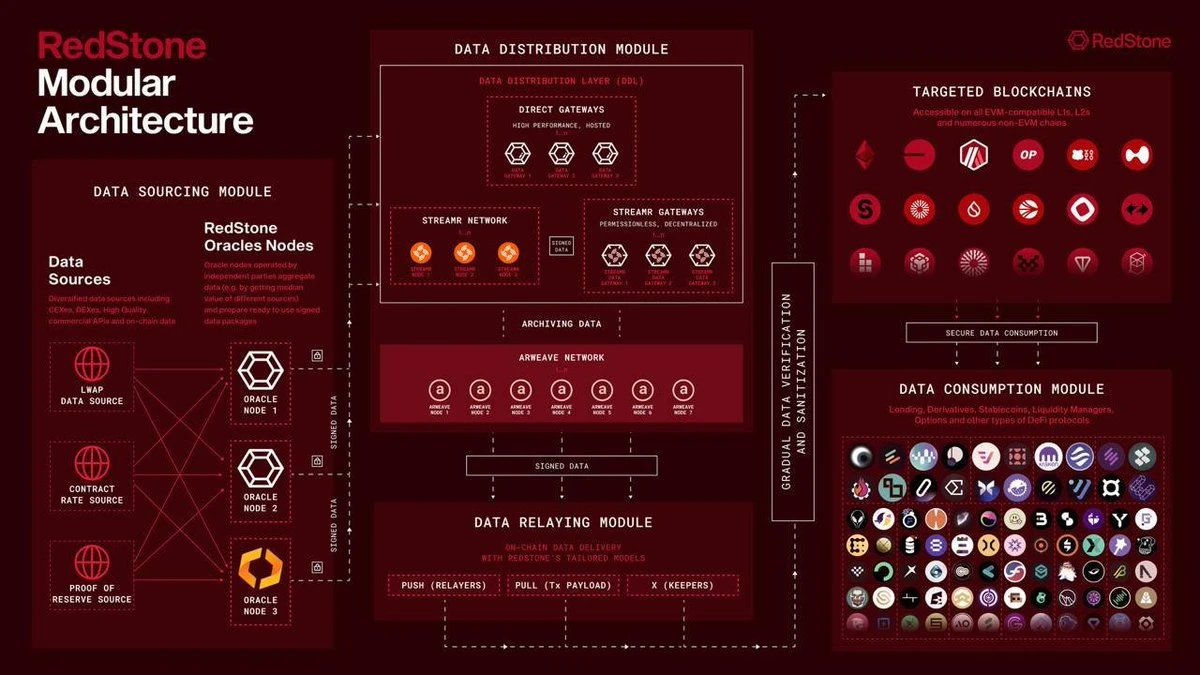
In addition to scalability, modularity is one of RedStones main advantages. The platforms modules provide both pull and push modes. Providing projects with better flexibility, they can choose managed or raw oracle data sources based on their specific needs. Projects can choose carefully filtered and verified price feeds or customizable raw data streams to protect their assets.
Odaily Note: The pull model and push model are as follows:

Due to its modular architecture, RedStone infra allows components of different systems to be seamlessly exchanged without affecting system performance or reliability. The plug-and-play modularity makes RedStone one of the most versatile oracle solutions in todays DeFi innovations and emerging chain systems.
Market Indicators
Customer Growth
RedStone’s modular, plug-and-play architecture has driven user growth for its project, making it one of the fastest-growing oracle solutions in the blockchain space.
Throughout 2024, RedStone has significantly expanded its influence, partnered with over 100 new clients, and released on over 30 chains. With over $6.8 billion in TVS, RedStone has become the second largest multichain oracle provider in the industry, while Chainlink is primarily focused on the ETH ecosystem.
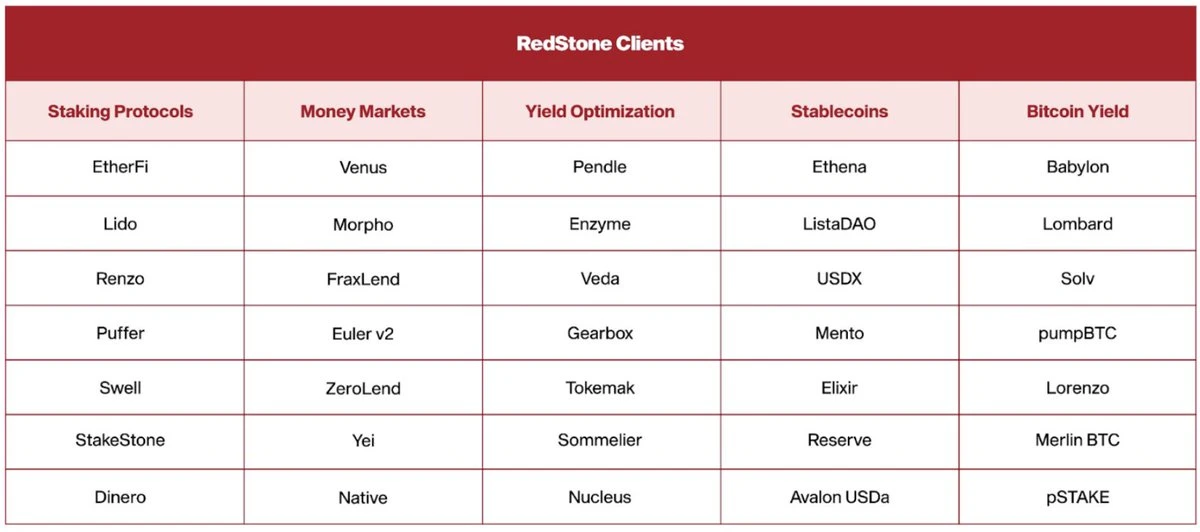
The platform’s reputation for reliability continues to attract mainstream players in DeFi. Notable partnerships include securing $3 billion in TVS for Spark (Maker’s lending protocol), and providing price feeds for DeFi leaders such as Pendle, Ethena, and various BTC staking, yield stablecoins, LST and LRT, etc. Its client list also reflects the industry’s confidence in RedStone’s reliable and customizable oracle solutions.
Price feedback time (low latency)
RedStone is one of the fastest and most reliable oracles in the space, while remaining decentralized, which is considered a trilemma. In terms of speed, RedStone updates faster than most centralized oracles (only Binance is slightly faster than RedStone). It is great that RedStone can compete with CEXs while remaining decentralized.

stability
RedStone has also demonstrated reliability during market fluctuations, maintaining consistent and accurate price feedback at the most important moments. During the $2 billion liquidation event in February 2024, RedStone successfully pushed 119,000 updates in 24 hours, with the ETH/USDC price update exceeding Chainlink by 30 points, providing it with newer and more accurate prices.
It turns out that during the Renzo (ezETH) decoupling in April 2024, RedStone was able to keep up with price changes better than Chainlink. During this period , RedStone issued about 40 price updates in just 3 blocks, while Chainlink only pushed about 20 updates in the same time. This shows that RedStone is actually faster than the market-leading oracle providers. For more details, please refer to the Chaos Labs report .
Comparative advantages: Each oracle project has its own advantages, but RedStone draws on the strengths of all and integrates all functions together.
Comparison of RedStone and other oracles
The following is a brief introduction to the mainstream oracle projects on the market:
Chainlink: Mainly for EVM, OG DeFi, mainly adopts the push model, provides reliable data through bridging using CCIP and expensive integration settings, and only supports a small number of blockchains;
Pyth: Mainly targeting the non-EVM, Perps market, mainly adopts the pull model, uses Wormhole as a cross-chain relay, and focuses on data push quality;
RedStone: Any chain, any market, push model and pull model, cost-effective on-chain verification using eigenlayer AVS, reserve proof of wrapped BTC assets, etc.
The following figure compares the differences between the three important oracle providers on the market:
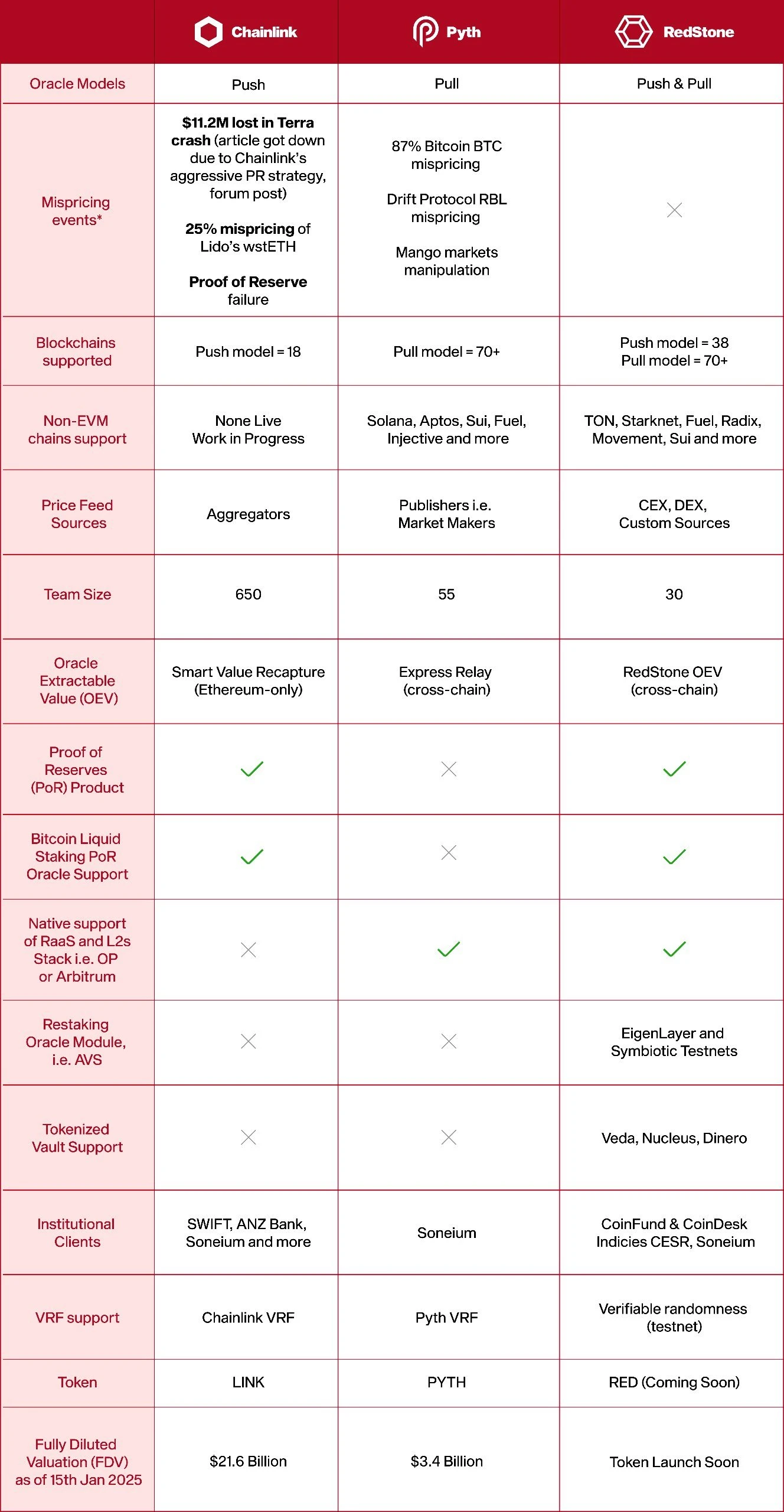
RED’s Token Economics in the Upcoming TGE
As RedStone scales to thousands of on-chain protocols, the RED token will play a key role in decentralizing the oracle and capturing value from all integrated projects. Data providers (operators) on RedStone have complete flexibility, they can set any collateral, charge any fee (in any token), or establish any requirements they want.
RED will serve as a utility token that holders can stake and delegate to data providers to earn a share of fees and rewards.
In addition to this, RED will also allow a re-staking version, allowing its LRT to be used in any DeFi protocol to unlock additional economic value (similar to stETH).
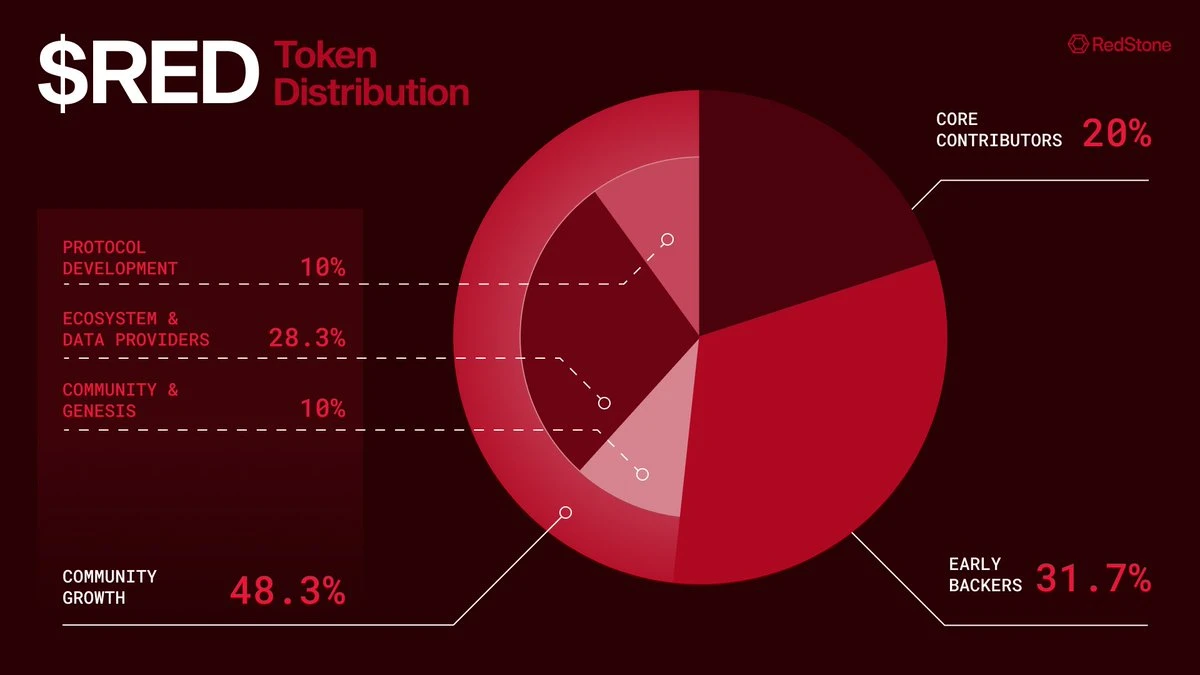
Official data shows that the total supply of RED tokens is 1 billion. The initial circulation accounts for 30%. RED will be issued as an ERC-20 token, but can then be bridged to Solana, Base and all other supported networks through the Wormhole native transfer standard.
RED is designed to be community-centric: the majority of the token supply (48.3%) will be allocated to community growth initiatives, including airdrops, future donation programs, and incentives, and 20% will be allocated to core contributors;
To ensure the long-term sustainability of RED, 70% of RED tokens will be fully locked within 12 months after the TGE and gradually unlocked over the following 36 months.
As the RedStone customer base grows, operators will earn more fees, which will also increase the returns of RED token holders. Higher returns will lead to higher token staking rates, ultimately forming a positive feedback loop.
RED Token Valuation
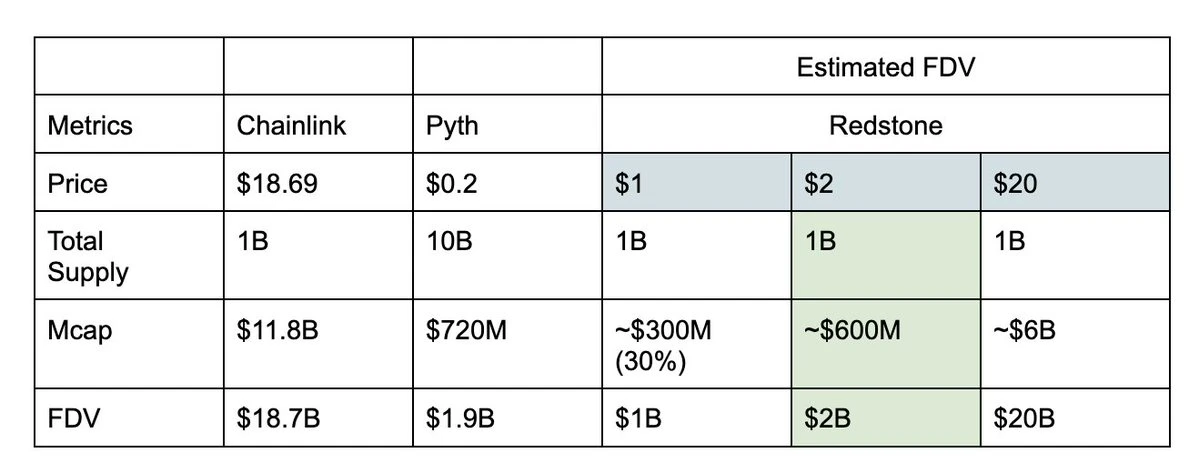
The leading oracle projects on the market, FDV, have reached billions of dollars. As leading oracle protocols, comparing RedStone with Chainlink and Pyth can better infer the price of RED tokens:
With a total supply of 1 billion tokens, an initial price of $1 would give RedStone a FDV of $1 billion, but $1 seems conservative given the project’s current market positioning.
A better way to extrapolate the valuation is to compare to Pyth’s $2 billion FDV, which, given a 30% initial circulating supply, would give a price of $2 per token, which is also what I would expect the RED token price to be.
Considering that if the market conditions improve, RED may reach Chainlinks FDV, the token price may rise to US$20 per coin.










